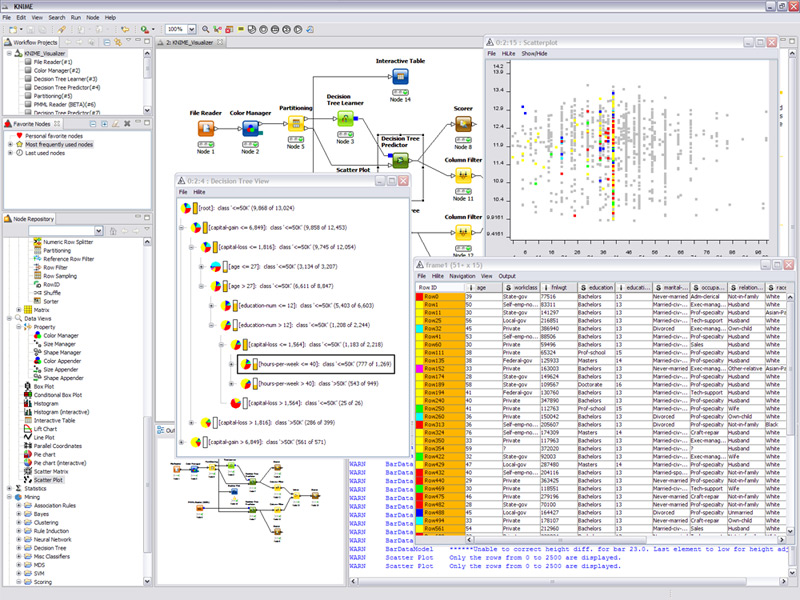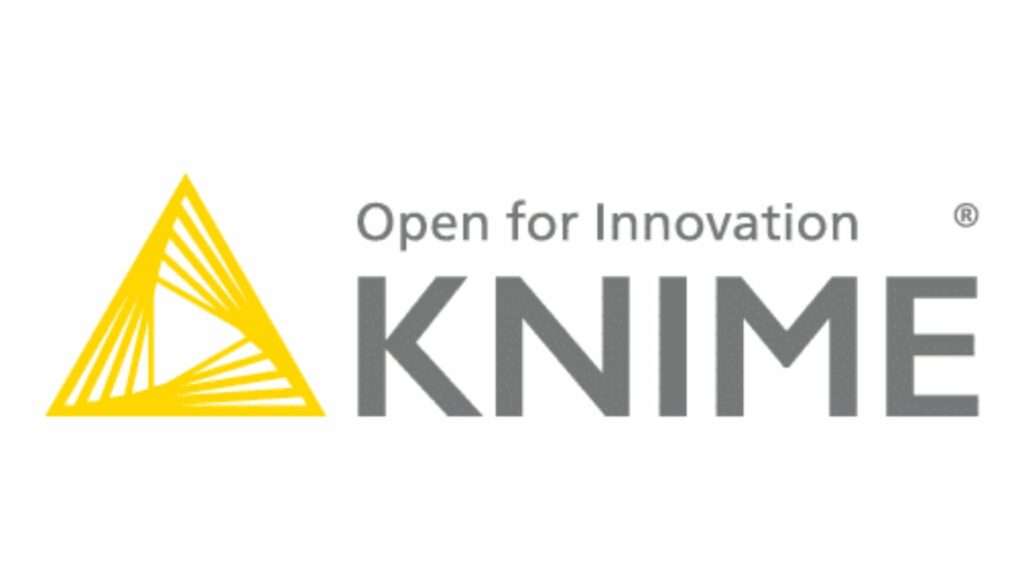The ability to exploit and interpret data effectively has become a real asset. With an overabundance of information, the demand for high-performance, easy-to-use tools capable of transforming data into actionable insights is greater than ever. That’s where Knime comes in, an open-source data analysis platform that enables data scientists and marketing professionals to dive deep into their data.
What is Knime?
Knime (Konstanz Information Miner) is a powerful, open-source data analysis platform that enables users to create visual workflows for data manipulation, analysis and machine learning. Thanks to its drag-and-drop interface, it eliminates the need for coding, making the tool accessible to marketing teams wishing to adopt a data-driven approach without relying entirely on technical experts.
Knime offers an intuitive interface for cleansing, preparing and analyzing data. This flexibility allows marketing professionals to focus on insights rather than technical hurdles. Whether you’re working on campaign performance, customer segmentation or predictive analytics, Knime can help you streamline your processes and make data analysis more accessible.

Image Wikipedia.org
Why marketers should care
At a time when data has become a valuable asset, the ability to extract relevant insights from vast data sets can differentiate a brand from its competitors. Marketers need tools that integrate seamlessly into their ecosystem, and Knime excels in this area. Here’s why it deserves your attention:
- Data integration capabilities: Knime supports a wide variety of data formats and sources. Whether it’s data from Google Analytics, CRM, social network metrics or sales data, Knime can bring it all together for a unified analysis.
- Automate repetitive tasks: By creating reusable workflows, marketers can automate repetitive tasks such as data cleansing, report generation and A/B test analysis. This enables marketing teams to focus more on strategy than on tedious tasks.
- Customer segmentation and targeting: Knime’s machine learning capabilities enable marketers to create predictive models, helping them to better understand customer behavior. From segmenting customers to predicting their next actions, Knime provides deeper insights for more effective marketing campaigns.
- Marketing campaign optimization: Knime offers tools for optimizing campaigns through data analysis. By evaluating historical campaign data, marketers can determine what works and adjust their strategies for maximum ROI.
- Visual workflow: The visual interface is one of the aspects that sets Knime apart from traditional data analysis tools. With drag-and-drop functionality, marketers can build complex workflows without the need to write code, making advanced analysis more accessible even to those without a technical background.
Marketing use cases
- Sentiment analysis: Knime can be used to analyze customer reviews, mentions on social networks and feedback to gauge sentiment around a brand. This enables marketers to adjust their communication and proactively address customer concerns.
- Predictive sales analysis: Thanks to Knime’s machine learning nodes, marketers can predict which customers are likely to convert, drop out, or make repeat purchases. This information can be used to personalize campaigns and increase customer lifetime value.
- A/B testing and campaign analysis: Marketing teams can use Knime to evaluate the results of different campaigns, understanding which strategies worked best and why. This enables ongoing optimization of marketing efforts.
Real-life application: P&G’s use of Knime for supply chain resilience
A prime example of Knime’s real-world impact comes from Procter & Gamble (P&G), one of the world’s largest consumer goods companies. P&G faced the challenge of managing a complex supply chain, spanning hundreds of products, suppliers and geographies. To maintain the resilience of its supply chain, P&G turned to Knime for real-time data analysis.
Using Knime, P&G was able to monitor its supply chain data in real time, enabling them to quickly identify and react to potential disruptions. For example, during the COVID-19 pandemic, Knime helped P&G better manage inventory, anticipate delays and make critical decisions based on real-time data. This not only ensured product availability for consumers, but also delivered substantial savings on costs associated with supply chain inefficiencies.
Integrating Knime into P&G’s operations has provided a powerful solution for resilience, enabling the company to manage one of the world’s most complex supply chains with data-driven agility. This case shows just how adaptable Knime can be to a variety of business challenges, making it a valuable tool not just for marketing, but for any data-intensive operation.
For more details on P&G’s success with Knime, read the full storyhere.
How to get started
Knime is incredibly flexible, and best of all, it’s free. Here’s how you can start using Knime for your marketing data:
- Download and install: Knime is available free of charge from its official website https://www.knime.com/.
- Access free learning resources: Knime offers a wide range of tutorials and examples to help you get started, even if you don’t have a solid data science background.
- Take advantage of the community: As an open-source tool, Knime has an active community of users who regularly share workflows, extensions and tips, which can help accelerate your learning curve.
Conclusion
For marketing teams seeking to gain competitive advantage through data-driven strategies, Knime offers a powerful, cost-effective solution. With its easy-to-use interface, comprehensive capabilities and strong community support, it democratizes access to advanced analytics. Whether you’re a seasoned data scientist or a marketer new to analytics, Knime provides the tools you need to transform data into actionable insights that drive growth.
To find out more: https: //knime.dev/



